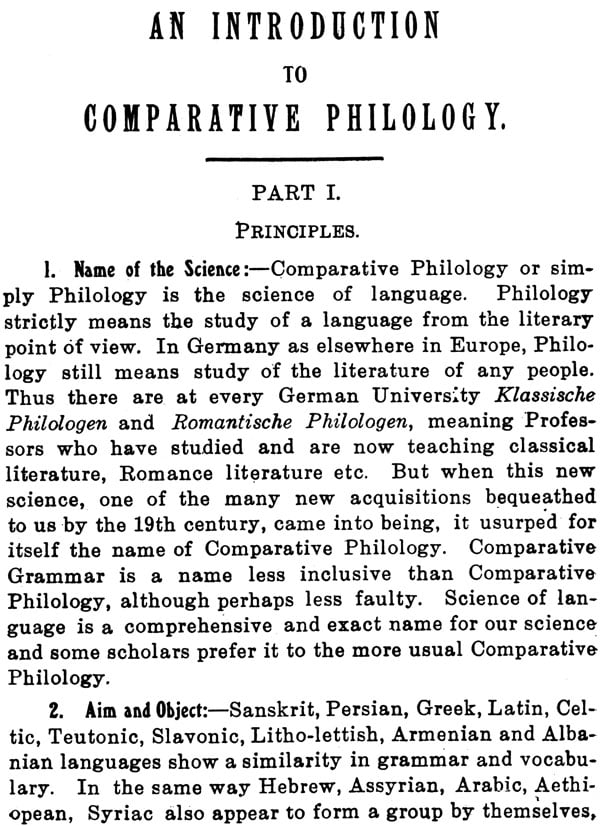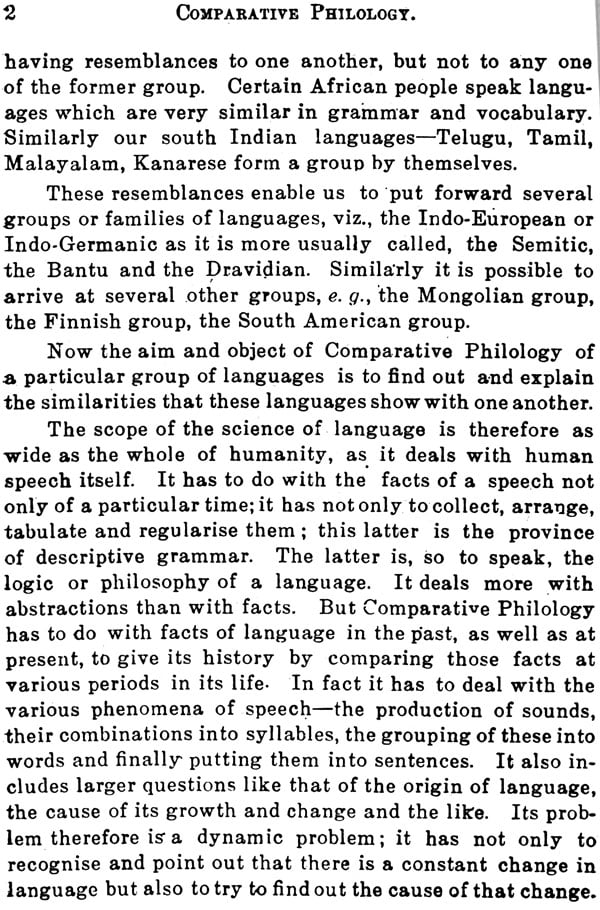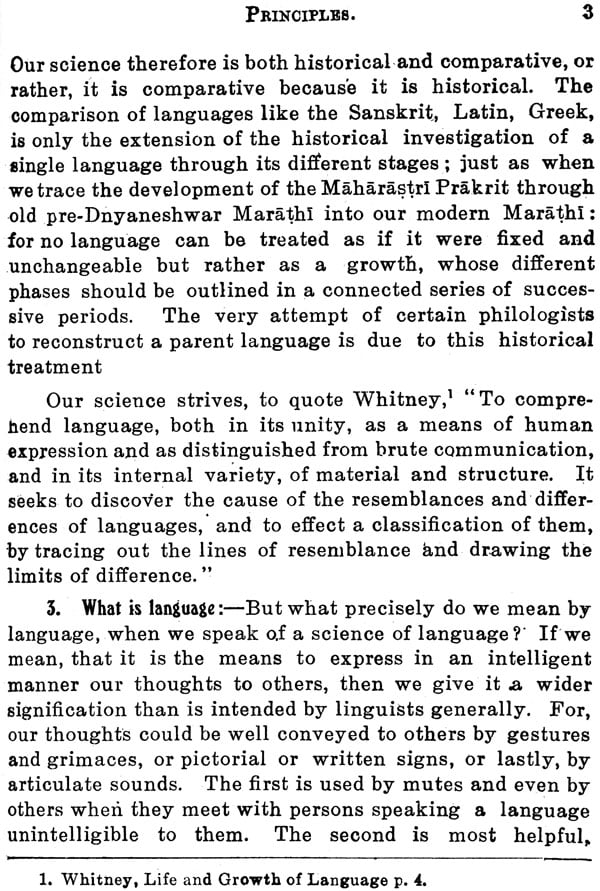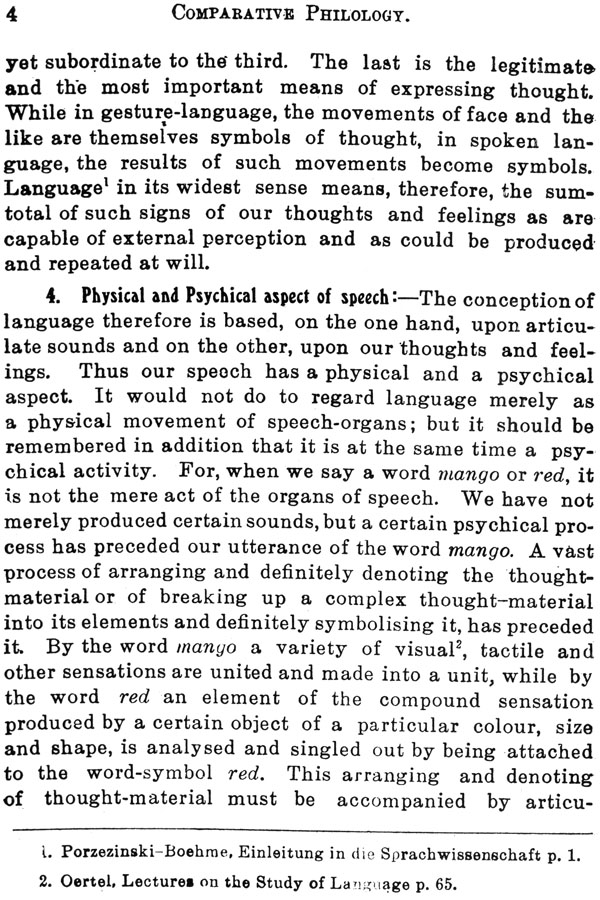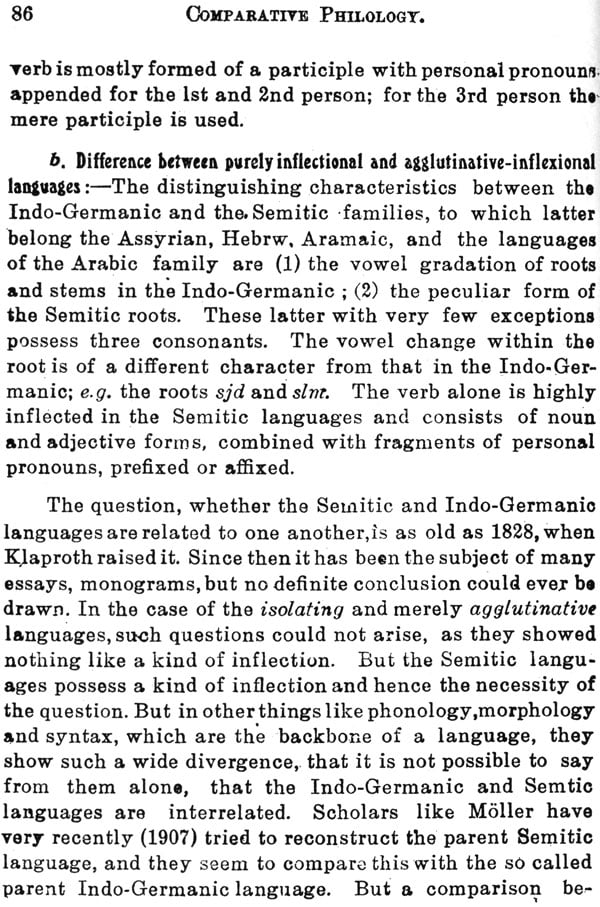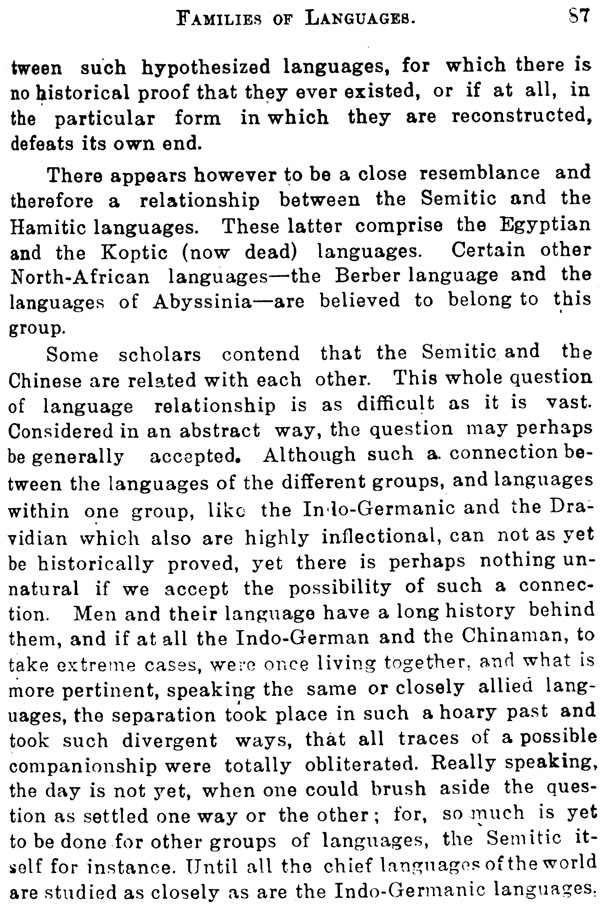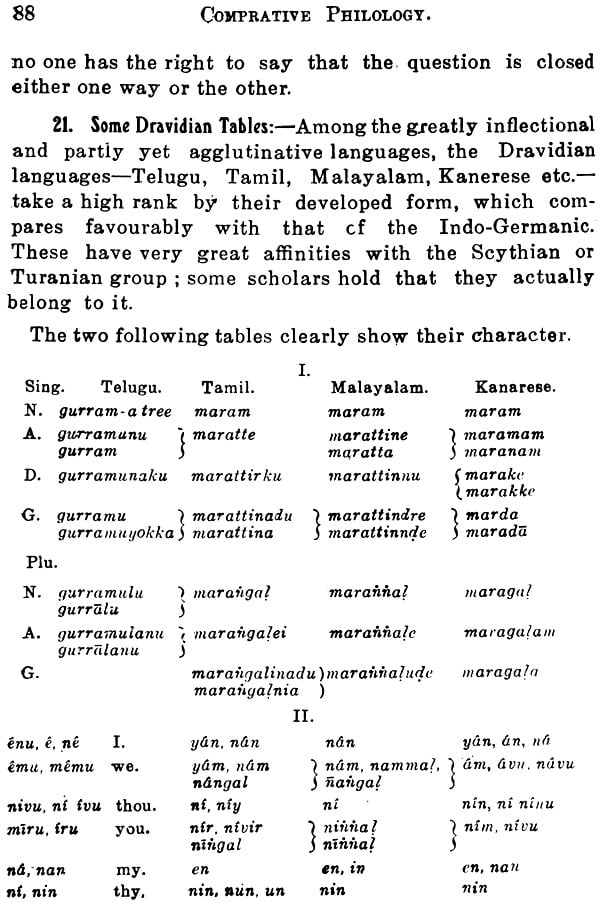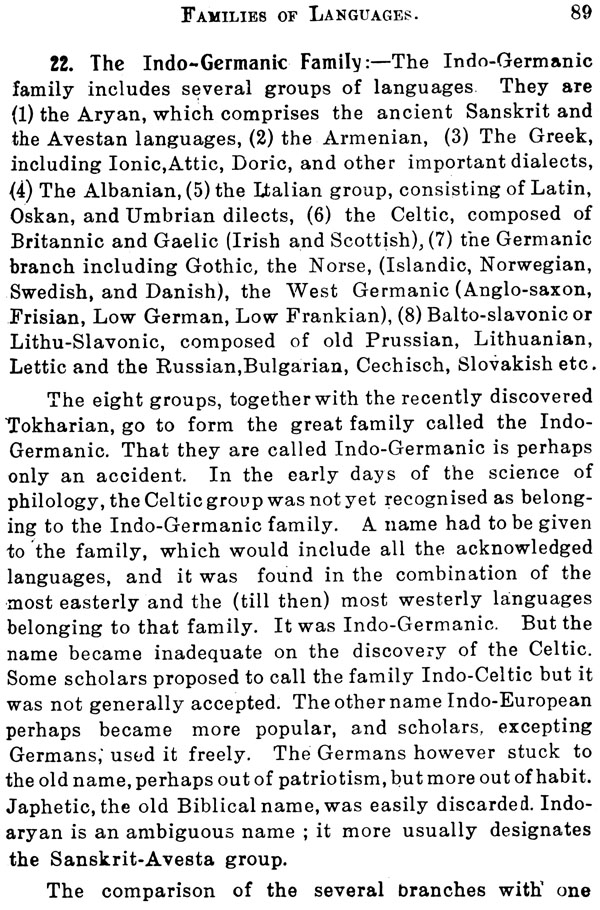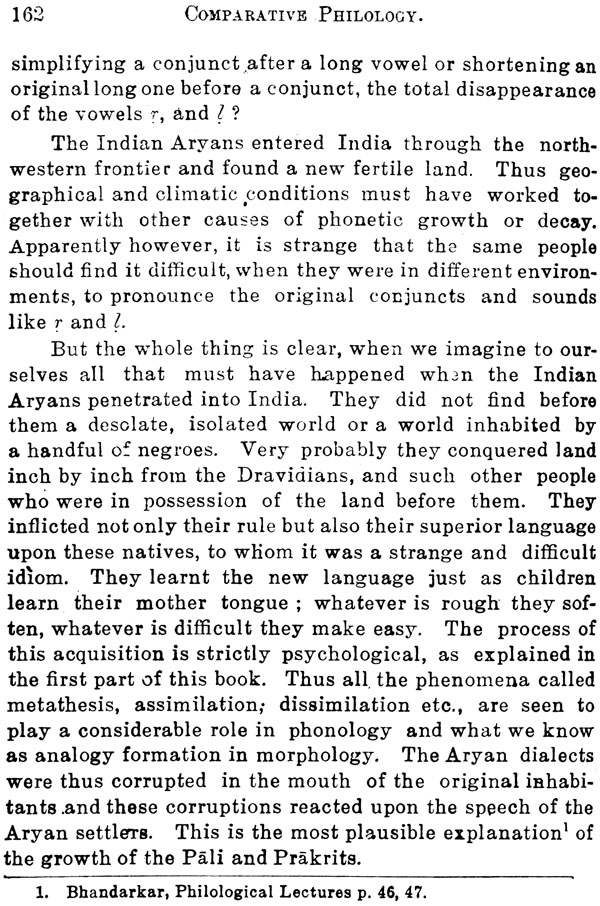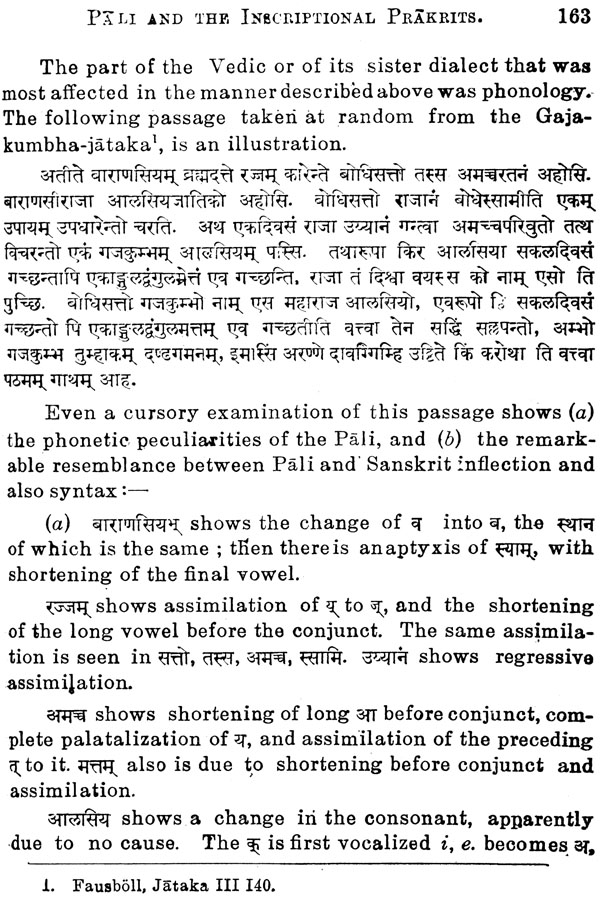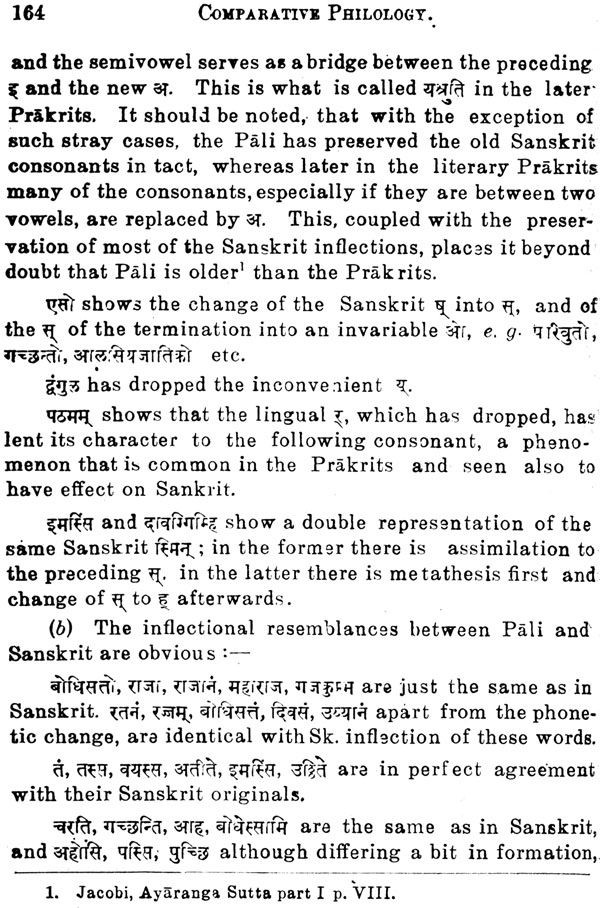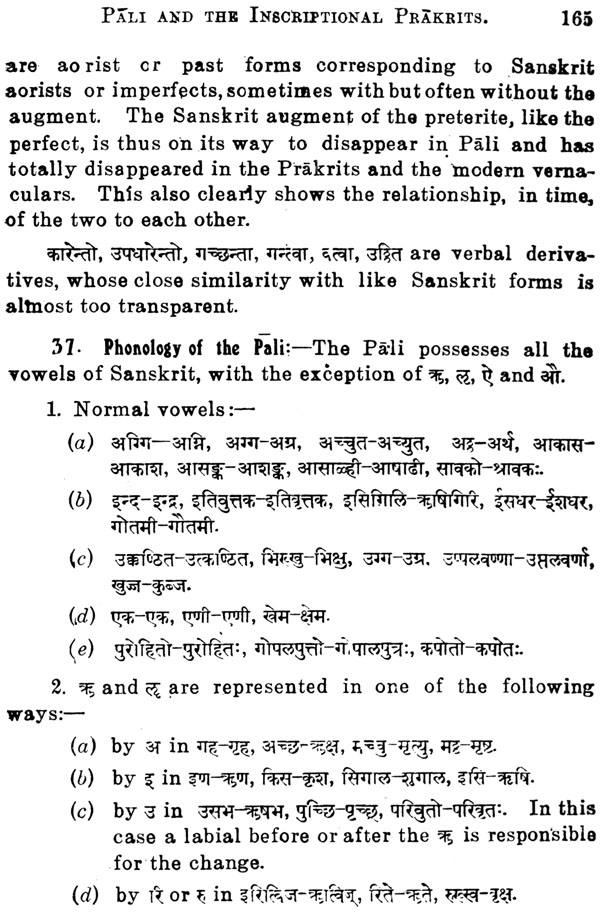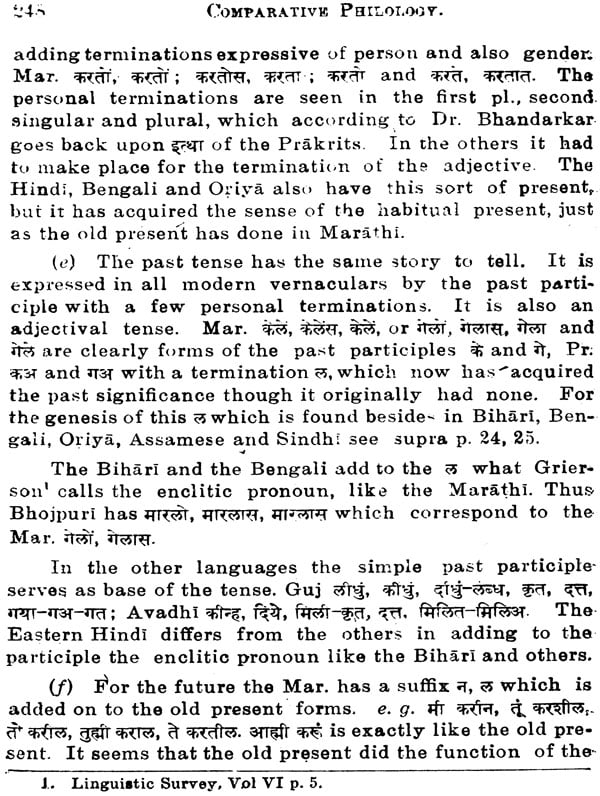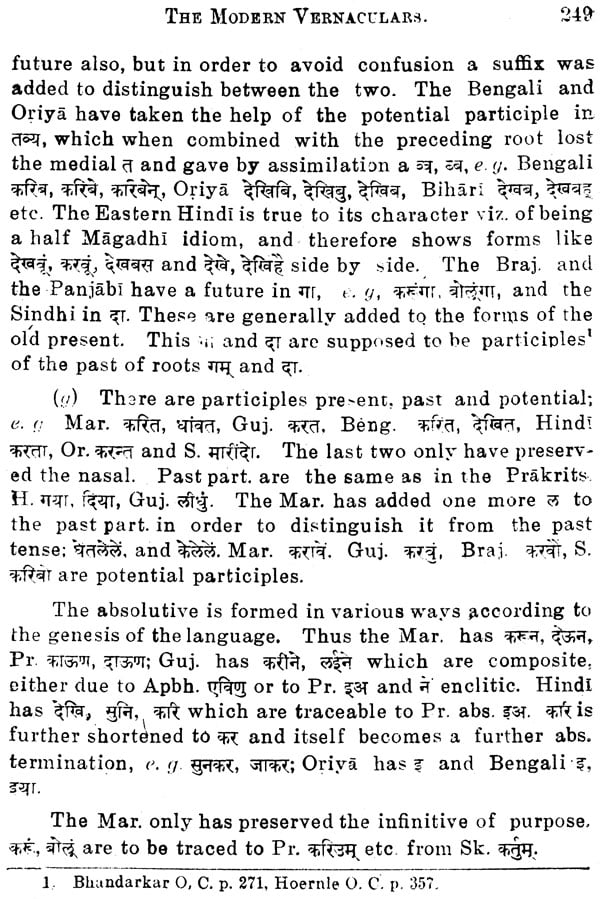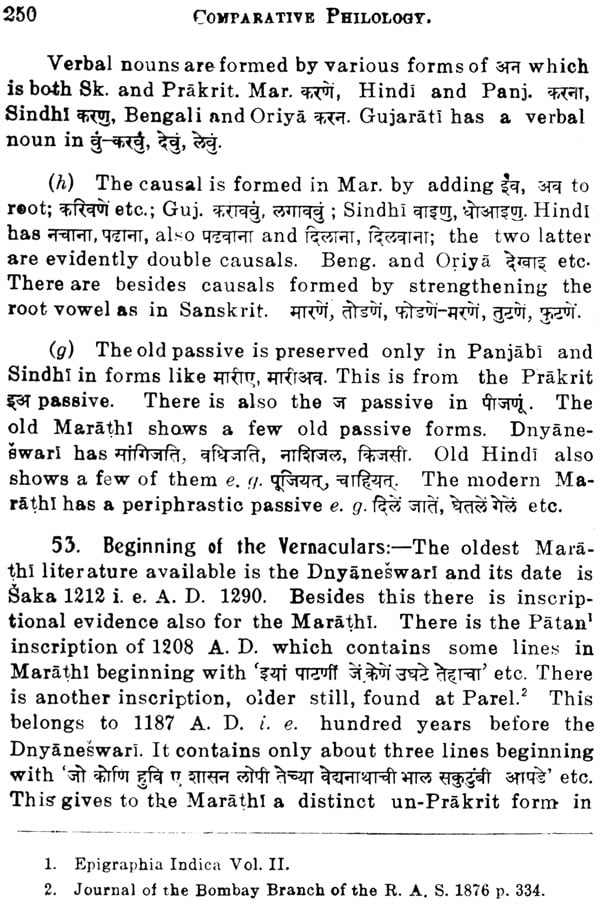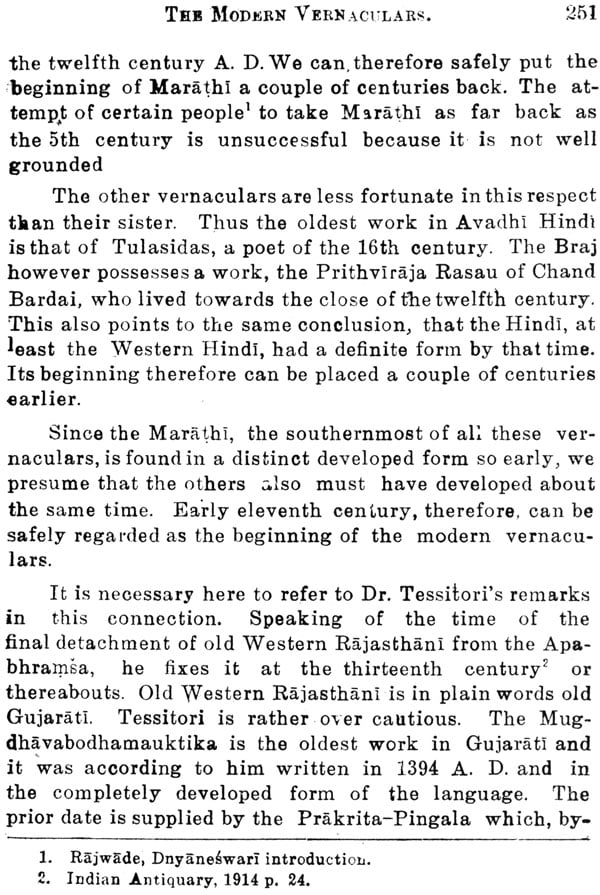
An Introduction to Comparative Philology
Book Specification
| Item Code: | IDJ090 |
| Author: | Pandurang Damodar Gune |
| Publisher: | Chaukhamba Sanskrit Pratishthan |
| Edition: | 2005 |
| ISBN: | 8170842537 |
| Pages: | 252 |
| Cover: | Hardcover |
| Other Details | 8.7" X 5.8" |
| Weight | 450 gm |
Book Description
Foreword
This little book is the outcome of a course of postgraduate lectures that I delivered in 1916-17 at the Bombay University. In its attempt at organizing the teaching side, the Senate had instituted a course of post-graduate lectures in Indian Classical Languages, Philosophy, Indian History and Economics. I was invited to deliver twenty-four lectures on Comparative Philology and the Nirukta. The eighteen lectures which I devoted to the former subject form the basis of the present volume. I had to rearrange and partly rewrite the whole thing in order to suit the book form.
I believe I need offer no apology for writing this book. The University has introduced Philology amongst the subjects to be studied by candidates for the M.A. who offered languages. There are already some excellent introductions to Comparative Philology, but unfortunately they are not available to our students as they are written in the French, German and Russian languages. Secondly they are of a general character and, as a rule, written with reference to the European classical and modern languages. Giles' Manual of Comparative Philology is the only useful book in English, but it has reference to the Teutonic and Classical languages. A book, therefore, which combined principles of the Science of Language with practical illustrations from the Indian branch of the Indo-Germanic family was wanted; and I have tried to supply the need.
I have divided the book into five parts. The first part deals at some length with the principles of the Science. In this I have drawn the illustrations from the Indian languages along with others. The second part is a small one, but it was necessary in order to show the relationship between the European and the Indian Aryan languages. I have called it 'Families of Languages.' The third part treats of the Avesta and ancient Sanskrit and is intended to present a comparative picture of the two old languages. The fourth part deals with the next stage in the development of Indian languages and is called 'Pali and the Inscriptional Prakrits'. The last part bears the title 'the literary Prakrits and the modern Vernaculars'. The latter portion of this part has been necessarily brief and at some places suggestive only, as most of the modern vernaculars lack well written historical grammars. A detailed and scientific comparison of these will be possible only after such grammars become available. However valuable in other respects, I must say that the 'Linguistic Survey' cannot form the basis of comparison, because it is necessarily of a sketchy character and deals with specimens of the vernaculars in their latest phase only.
For convenience of printing, I have followed the Greek method in marking accent of Sanskrit words, and marked udatta only.
I have acknowledged the help of my literary predecessors in the list of books consulted. The deepest debt of gratitude that I owe is to professors Brugmann and Windisch of the Leipzig University, who initiated me into Comparative Philology and Pali Inscriptology respectively.
Before closing, I must thank my colleagues Prof. K.N. Dravid and Mr. N.B. Utgikar M.A., for having kindly gone through part of the proofs, and Professors G. C. Bhate and G. H. Kelkar for having gone through the whole for correction of such mistakes as might have still remained. The credit of the index at the end is entirely due to my friend Mr. Utgikar. Lastly I must express my obligation to the Manager of the Aryabhushan Press, for having struck new types for some Greek, Gothic, and Avesta words, and generally deferring to my convenience and time. To Dr. Sardesai of the Oriental Book-supplying Agency is due the entire credit of the publication of the book itself, for had he not undertaken to do so, my wish to publish the book would have remained a wish only.
P. D. Gune
| PART I. | PAGE. 1-82 | |
| Principles Name of the Science 1. Aim and Object 1. What is language 3. Physical and Psychical aspect of speech 4. Outer speech 5. Stress or accent 7. Inner speech 7. Language an acquisition 9. Origin of language 10. Language is not an organic growth 14. Constant change in language 14. Dialects 15. Examples from Indian dialects 19. Dialects point to a common mother-language 20. Practical illustration of linguistic change from the Dnyaneswari 21. Explanation of words and forms like savsaru, jaanay, thavala, yera.rukha etc. 22-30. The cause of change 31. Physiological and acoustic causes of change 32. What is phonetic law 34. Grimm's law or sound-shifting 36. Second sound-shifting 37.Vener's law 38. Unconditional phonetic change 39. Conditional phonetic change 43. Greek consonants at the end of a word 43. Change dependent upon accent 44. Ablaut 44. parsaran 46. The gun and vridhi phenomena 47. Phonetic change due to the influence of another syllable 48. Assimilation 48. Regressive assimilation 49. Dissimilation 50. Prothesis 51. Anaptyxis 51. Syncope 52. Haplology 52. Metathesis 52. Change conditioned by rhythm and quantity 53. Phonetic laws not absolute like natural laws 53. Recapitulation-causes of phonetic change 53. Importance of association 57. Analogical disturbance in inflection and conjugation 60. Contamination 60. Semantics 63. Intellectual laws of language 64. Examples of disappearing words 67. Pejorative tendency 69. Associative disturbance in meaning 69. Metaphor 70. Expansion and restriction of meaning 70-71. Syntax 73. Gradual formation of syntax 74. The parts of speech, how they developed 75. Conjunction 76. Pronouns 77. Article, copula, neuter and transitive verbs 78. Prepositions and cases 79. Causes of fusion of cases 80. | ||
| PART II. | PAGE 83-115 | |
| Families of Languages Language groups 83. The agglutinative languages 83. The agglutinative-inflectional languages 84. Root or isolating languages 85. The inflectional languages 85. Difference between purely inflectional and agglutinative inflectional languages 86. Some Dravidian tables 88. The Indo-Germanic family 89. Characteristics of the principal groups 93. Some of the characteristics of the Aryan group 93. The Armenian language 93. Greek language and the Italian language 93. The Germanic languages 93. The Balto-Slavonic group 94. The Keltio languages 94. The Albanian language 94. The Tokharian language 94. Interrelations between the groups 95. indo-Balto-Slavonic and Graeco - Italo - Celtic groups 97. Individual isolated resemblances do not warrant closer grouping 99. Tokharian, a centum language 99. The course of migration of the speakers of different groups 100. The original home of all 102. Civilization as disclosed by comparison of languages 103-104. Characteristics of the stone age 104. Metal age 104. Domestic and communal life 106. Habitation 108. Drink 109. Trade and industry 110. Divisions of time 111. The family 112. Tribes and people 114. Blood revenge 114. Religion 115. | ||
| PART III. | PAGE 116-159 | |
| The Indo-Iranian or Aryan Group I. Aryan Group 116. Avesta, Pahlavi, Persian 117-18. Close relation between Avesta and Sanskrit 118. The Phonology 119. Changes in quality and quantity 120.Epenthesis, Prothesis, Anaptyxis 121-122. Avestan consonantal system not as rich as Sanskrit system 122-123. Inflections 124. Yasna and daena declined 125. Adjectives, numerals and pronouns 126. Conjugation 127. Imperative, subjunctive, optative 128. Aorist and future 129. II. Vedio Sanskrit 130. Some characteristics 131-132. Vedio prose 133. Vedio and classical Sanskrit 134. Wackernagel's explanation of simplification and losses observed in CI. Sanskrit 135. Classical Sanskrit not created by grammarians but a literary development 136. Phonology of Vedic Sanskrit 137. Vowels 137-138. The quantity of vowels 140. Gradation or Ablaut 140. Quantitative ablaut 141. Consonants 143. The Indo-Germanic palatals 144. Dental and labial series 145. Cerebrals 146. Fortunatov's law 146. Rejected by Wackernagel and others 147. Prakrit origin of cerebrals 147. Dentals cerebralized in Prakrits 148. Oldest phase of the Pali and Prakrits side by side with the Vedio language 148. Inflection 149. Some paradigms 151. Conjugation 153. Comparative tables 154. Conjugation of some verbs 155. Origin of the aorist suffix 156. The future system 157. The distinction between temporal and modal stems 157. Secondary conjugation 159. | ||
| PART IV. | PAGE 160-189 | |
| Pali and the Inscriptional Prakrits I. Character of the pali 160. Causes of phonetic change shown by Pali 161. Illustration from Gajakumbha jataka 163. The inflectional resemblances between Pali and Sanskrit 164. Phonology of the Pali 165. Changes of vowels law of quantity 166-167. Vowels dropped without compensation 168. Consonants, change in consonants 168. Conjuncts simplified, assimilated or dissolved 168. Inflection 169. Paradigms 170. The declension of e and aoo bases 161. Conjugation 172. Moods 173. Personal terminations and some paradigms 172-174. The subjunctive and optative terminations 174. The imperfect and aorist 175. Causatives, desideratives, and denominatives 175. Examples 176. Origin of the Pali language 177. Views of Kuhn Franke and Windisch 178. II. Inscriptional Prakrits 178-179. First edict at Girnar, Jaugada & Mansehra 180-181. Inscriptions show more than two dialects 182. Difference between Girnar and Shah-bazgarhi 183. Phonology, change in quantity and quality, anaptyxis, syncope 185. Change in consonants 186. Inflection 186-87. Conjugation 188.Sanskritisms in Pali 189. | ||
| PART V. | PAGE 190-252 | |
| The Literary Prakrits and the Vernaculars I. Prakrits 190. The name and genesis 190. Apabhramsa 193. Home of the Prakrits and the Paisaol 194. Division of the Grammarians as against Hoernle's two-fold classification 195. Phonology of the Prakrits 196. Vowels 196. Changes in quality 196. Changes in quantity 197. The consonants 199. Initial consonants 199. Medial consonants 200. Nasals, semi-vowels and sibilants 201. Consonants assimilated, simplified or split up 202-03. Samdhi consonants 204. Inflection 205 Declension 205. The terminations 206. Paradigms of declension 207-208. Stems in r and some consonantal stems 209-10. Adjectives and pronouns 211-12. Numerals 213. Cinjugation 214. Optative and imperative 215. Aorist and future 216. Passive and secondary conjugation 217-19. Desi words 220. Period of the Prakrits 221-22. II. The modern vernaculars 223. The principal Aryan vernaculars of the present day 223. Topography of the vernaculars their dialects etc.224-32. Eastern Hindi and Western Hindi two distinct groups 228. Affinities and proposed groups of vernaculars 232. Grierson's Outer Circle 233. Agreement of the Marathi partly with the eastern and partly with the western group 224. Phonology of the modern vernaculars 235. Changes in vowels 235-36. Sound change due to accent 237. Consonantal changes 237. Reduction of aspirates to 239. Inflection 240. Old terminations preserved partly 241. Explanation of new terminations 242. Genesis of genitive suffixes 244. Adjectives and pronouns 245. Conjugation246. The old present preserved 246. Old imperative and future 247. The new present, how formed 248. The past tense is participles, 248. Participles, gerund, infinitive 249. Causal, passive 250. Beginning of the vernaculars 250-52. |
